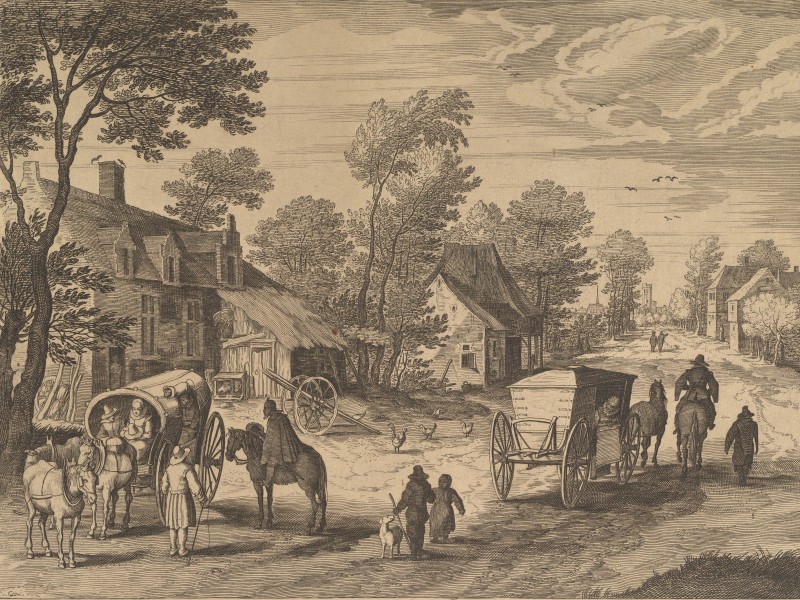
Imagine embarking on a journey in the sixteenth century, leaving behind the familiar and venturing into the unknown. Your knowledge of the world beyond your everyday surroundings relies on proclamations, official announcements, pamphlets, and, most importantly, the often unreliable word of mouth. If you are well-educated, you may have access to general knowledge about other countries through letters or books such as cosmographies, historiographies, and travelogues. However, these sources typically provide little practical information about documents, money, transport, accommodation, or food.
Documents, Please!
Personal identification in the sixteenth century was rudimentary and mainly relied on the honesty of travellers. Borders were difficult to control, and border checks only took place where geographic conditions compelled travellers to use specific routes, such as Alpine passes or ports like the English Channel. Instead, guards questioned travellers at city gates, asking them to state their name, destination, and place of origin.
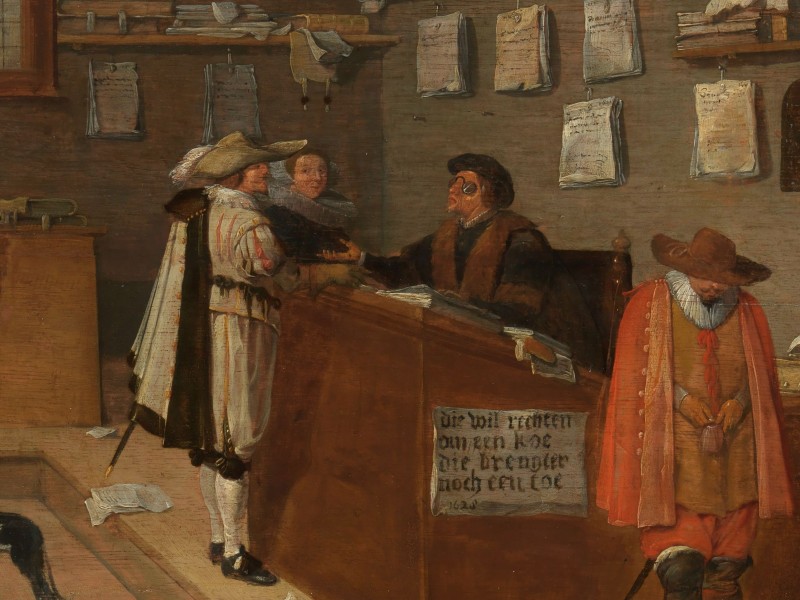
In provinces affected by war or plague, local and regional authorities utilised written documents to control access to border cities, combat espionage or verify that a traveller arrived from a safe area free from threatening diseases. These documents were often just letters issued for a specific region or destination, listing the traveller’s name and sometimes physical characteristics. They were relatively simple and could be easily forged. If needed, travellers had to obtain new documents from local authorities at each stop.
Money
Mobile payments, credit cards, and paper money did not exist in the sixteenth century. Throughout Europe, people were required to pay with coins. The quality and value of these coins varied from place to place; some coins were accepted only in certain regions, while others could be used across borders. Acceptance often depended on the coin’s gold or silver content and whether merchants recognised it as legitimate currency.
Funding a long journey required large quantities of coins. But travelling with a heavy bag filled with metal currency could quickly become cumbersome. It was also dangerous, as banditry was common in many areas, and you could easily find yourself relieved of your burden.
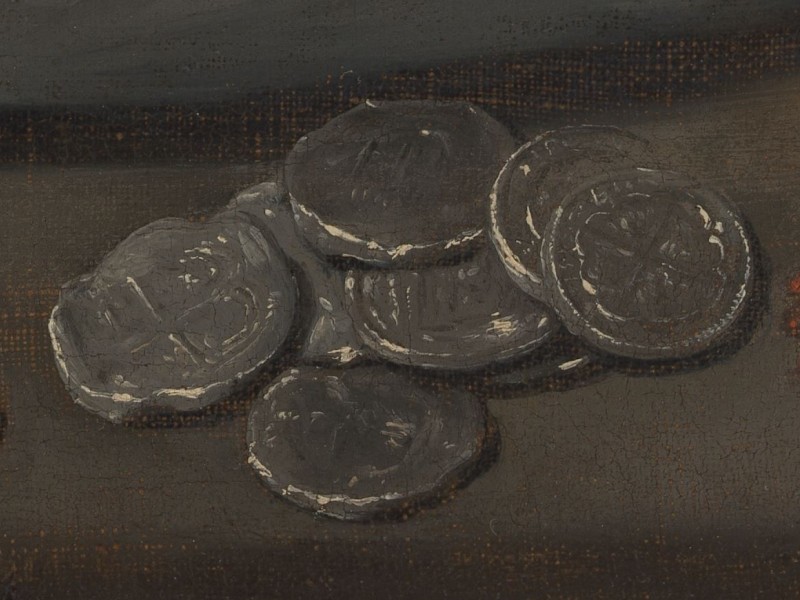
A prudent traveller would use bills of exchange, a financial instrument widely employed by merchants in the sixteenth century. Before setting out, you would hand your money to a trustworthy merchant banker and receive a bill of exchange. This bill was issued in your name and included a physical description, redeemable at specific banking houses along your route.
However, bills of exchange were of limited use in peripheral regions such as Eastern Europe or southern Italy, where the number of places to cash them was scarce. Hiding a few high-value gold coins within your belongings might be a preferred choice in such cases. A traveller could exchange them for smaller local coins upon arrival. A practical method to hide coins was to sew them into the clothes.
How Do You Get to Your Destination?
The early modern road network mainly consisted of dirt tracks. Most roads were used for short-distance travel and the transport of goods between neighbouring communities. Only large towns and cities could afford the construction and maintenance of cobbled streets.
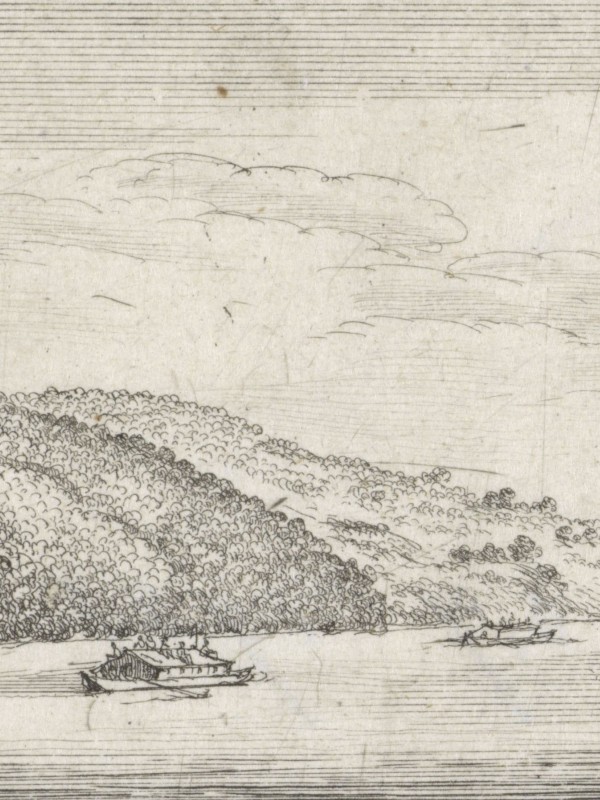
The choice of transport was also limited. Wealthy travellers either brought their coaches and horses or rented them. Everyone else travelled in the back of carts or on foot. A welcome alternative was rivers; boats and rafts would carry passengers on many larger rivers. While this mode of travel was not the fastest, it was generally secure and relatively comfortable. Given these limited options for transport, it was impossible to travel quickly to distant destinations.
Another matter while on the road was orientation. Signposts indicating directions and distances were rare or nonexistent, making it easy to get lost, especially in bad weather or darkness. Compounding this issue, maps of the time were often inaccurate, seldom showing roads, and frequently lacking details about towns and villages. Apart from naval charts, few maps were created with orientation in mind.
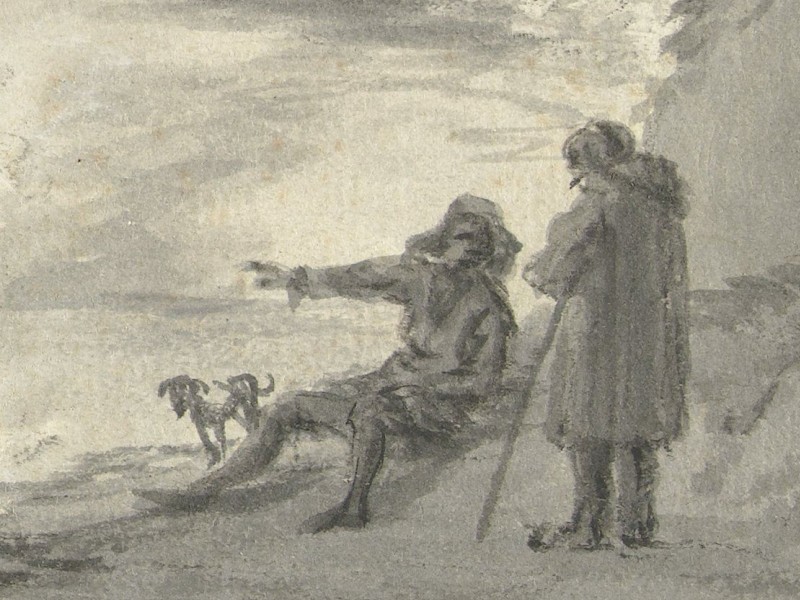
The guidebook as we know it today also did not exist. Travel literature of the time consisted primarily of publications known as ‘Ars Apodemica.’ These books were not comprehensive guides to specific destinations; instead, they offered humanist attempts to improve and systematise the moral, educational, and practical approaches to travel. They provided guidelines for travellers to record their experiences, but lacked helpful information about where to stay or how to navigate from one location to another. Some limited practical guidebooks were available for popular destinations like Rome and Venice, but they were usually only locally accessible and focused on pilgrims.
Companions in Travel
Today, travelling alone or with friends and family is a matter of choice rather than necessity. The social aspects are the most common reasons for travelling with others. However, in the sixteenth century, travelling alone was not advisable. A traveller needed companions for safety and guidance. Travelling in a group offered some protection against fraud, theft and bandits. Moreover, the social background, personal contacts, knowledge and language skills of companions could facilitate smoother travel. The correct word or face in the right place and a small exchange of coins could significantly ease one’s journey.
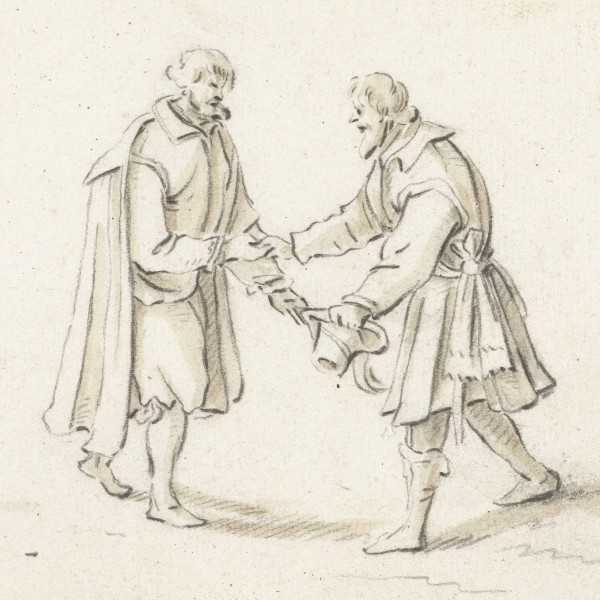
Orientation was also a concern. As mentioned, road signs, maps and guidebooks were rudimentary at best. The easiest way to find the correct route between two cities was to hire a local guide or have a companion familiar with the area.
Where to Stay and What to Eat
Travellers would be tired and hungry after a long day on the road. Upon reaching their destination, they would need to find a place to sleep and something to eat and drink.
First and foremost, arriving too late at a destination meant that a traveller had to spend the night outside the city walls. Most towns and cities in sixteenth-century Europe locked their gates at nightfall and did not reopen them until morning.
In the cities, the choice of accommodation was limited. Even popular destinations often lacked a selection of inns and guesthouses. The ideal option was, therefore, to stay with family or friends. Private accommodation was the most comfortable way to spend a few days in a city. Otherwise, travellers would typically stay in an inn. The quality of these inns varied, with rural and roadside inns being poorer than those found in cities. There was no way to book a room in advance, so if an inn was full, a traveller had to search for alternative lodging, which could mean sleeping in a stable on straw.
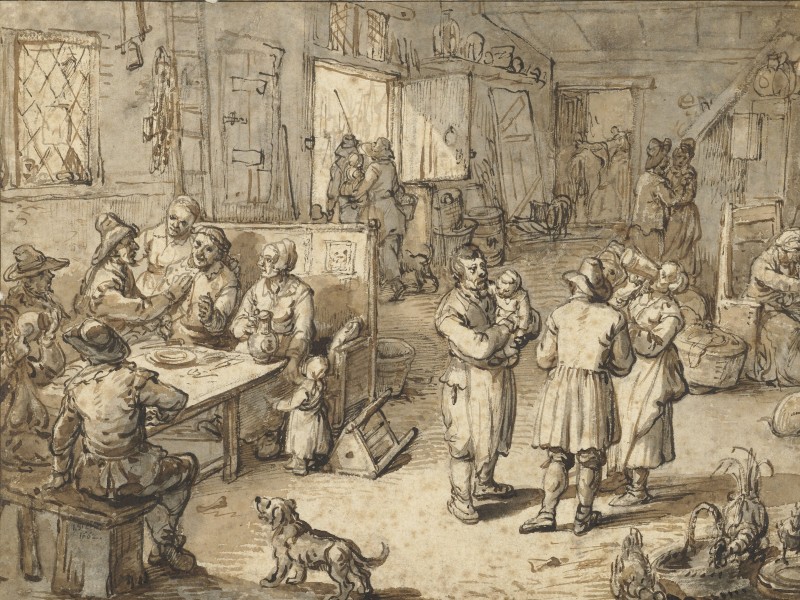
Many European inns featured only one heated room, a common area where guests spent most of their time eating, drinking, talking, or playing games. Inns usually lacked single rooms, requiring guests to share beds. While multiple bodies could provide warmth in the absence of proper heating, it also posed the risk of contracting diseases or encountering fleas and lice.
If a traveller needed to spend the night outside a town without an inn or tavern nearby, their best option was to knock on the doors of cottages and farmhouses. Villagers might offer accommodation for a few coins, but the conditions were primitive, with options to sleep on the floor or a bench. If the house had a barn or stable, travellers might be sent there. If no houses were nearby or villagers refused to open the door to strangers, the final choice was to spend the night in the open. Depending on the time of year, weather, and safety of the area, it could be a very uncomfortable and sleepless night.
The availability of food and drink for travellers depended on the region, season, location (village versus city), and the political and economic situation. In the sixteenth century, food preservation methods were limited, so travellers had to make do with what was available. Food was typically scarcer in late winter than in summer or autumn, and crop failures or political unrest could further reduce availability.
Water was generally not considered safe to drink. Hygienic conditions at the time meant it was often contaminated with germs and bacteria, and drinking it could cause dysentery and other unpleasant illnesses. A cautious traveller would add honey or vinegar to their water to kill bacteria, but alcohol was an even better option. In central and northern Europe, beer was the preferred drink, usually available in low-alcohol varieties that were safe for daily consumption. Even children drank it because it was healthier than water. In southern Europe, wine was often mixed with water for regular drinking.
Dangers and Annoyances
Travelling in the sixteenth century was fraught with hardship, difficulty, and danger. There was no guarantee of a safe return home, as the infrastructure to support and aid travellers in need was still underdeveloped. Armed conflicts regularly ravaged parts of Europe, and religious persecution was a real threat, especially with the Protestant Reformation spreading across the continent.
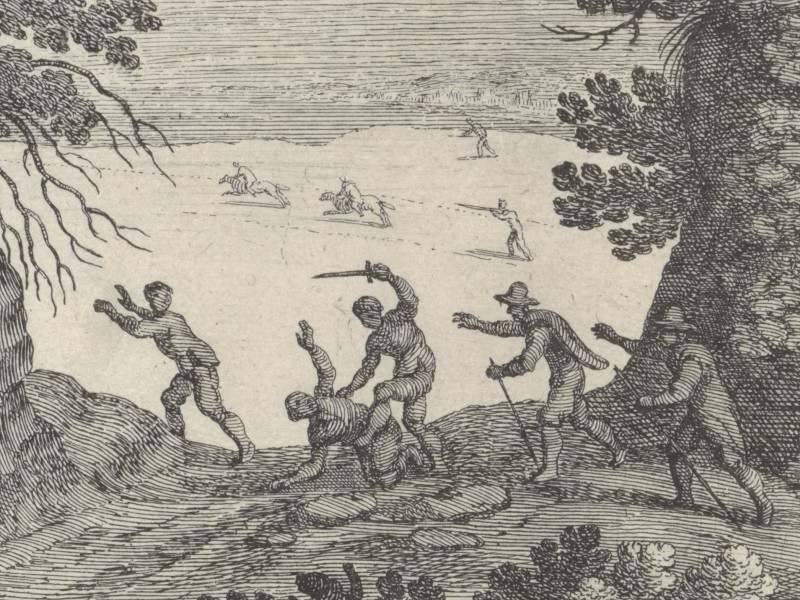
Banditry was widespread, although in some parts of Europe it was more common than in others. Remote regions or areas undergoing political unrest were especially susceptible to criminal activity, and in war zones, it was not just bandits but also marauding mercenaries and even desperate peasants who preyed upon travellers.
Another significant danger was diseases. Vaccinations were unknown, health insurance did not exist, and hospitals were far from desirable places to end up. Plagues were still common, and towns and cities often refused entry to outsiders during outbreaks out of fear of infection.
Gender Differences in Travel
Finally, it is crucial to recognise the gender differences in travel during the sixteenth century. Women’s rights and freedoms were much more restricted than men’s at that time. While a journey could benefit men, it was often considered harmful for women. Women were expected to stay at home, fulfilling their roles as wives and mothers. If a woman did travel, it was usually to visit family, meet a potential husband, or move to a new residence. Women seldom travelled alone and typically were accompanied by a male guardian, such as a husband, father, or brother.
Illustrations & References
All images are in order of appearance with links to sources on external websites:
- Aegidius Sadeler, Village Street with Two Carts; Metropolitan Museum of Art, New York.
- de Bloot, Pieter, The Lawyer’s Office, 1628; Rijksmuseum Amsterdam.
- Meester van de Amsterdamse Bodegón, Kitchen Scene, 1610 – 1625; Rijksmuseum Amsterdam.
- Hollar, Wenceslaus, Landschap met gezicht op slot Rannariedl aan de Donau, 1625 – 1677; Rijksmuseum Amsterdam.
- Schellinks, Willem, Italiaans landschap, 1637 – 1678; Rijksmuseum Amsterdam.
- Saftleven, Herman, Staande man en twee mannen elkaar begroetend, 1619 – 1685; Rijksmuseum Amsterdam.
- Anonymous, Een boerenbinnenhuis, 1600 – 1699; Rijksmuseum Amsterdam.
- van Nieulandt, Willem, Landschap met een gewapende overval, 1594 – 1635; Rijksmuseum Amsterdam.